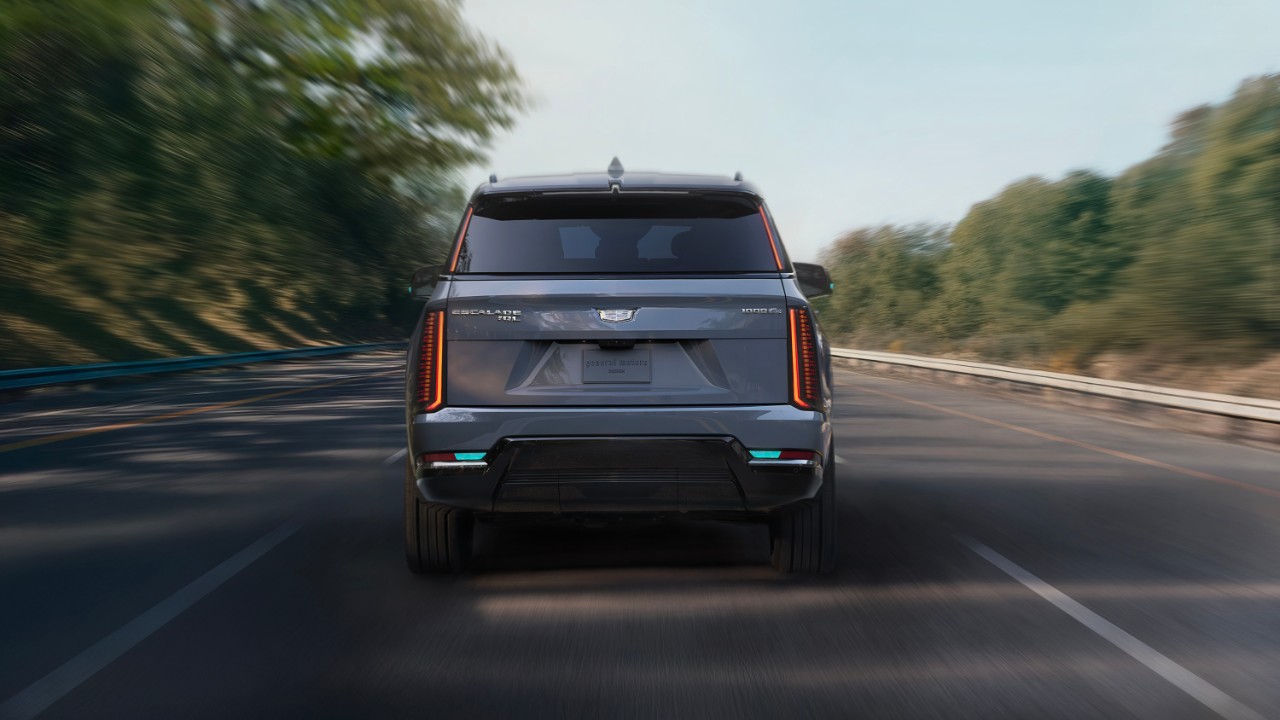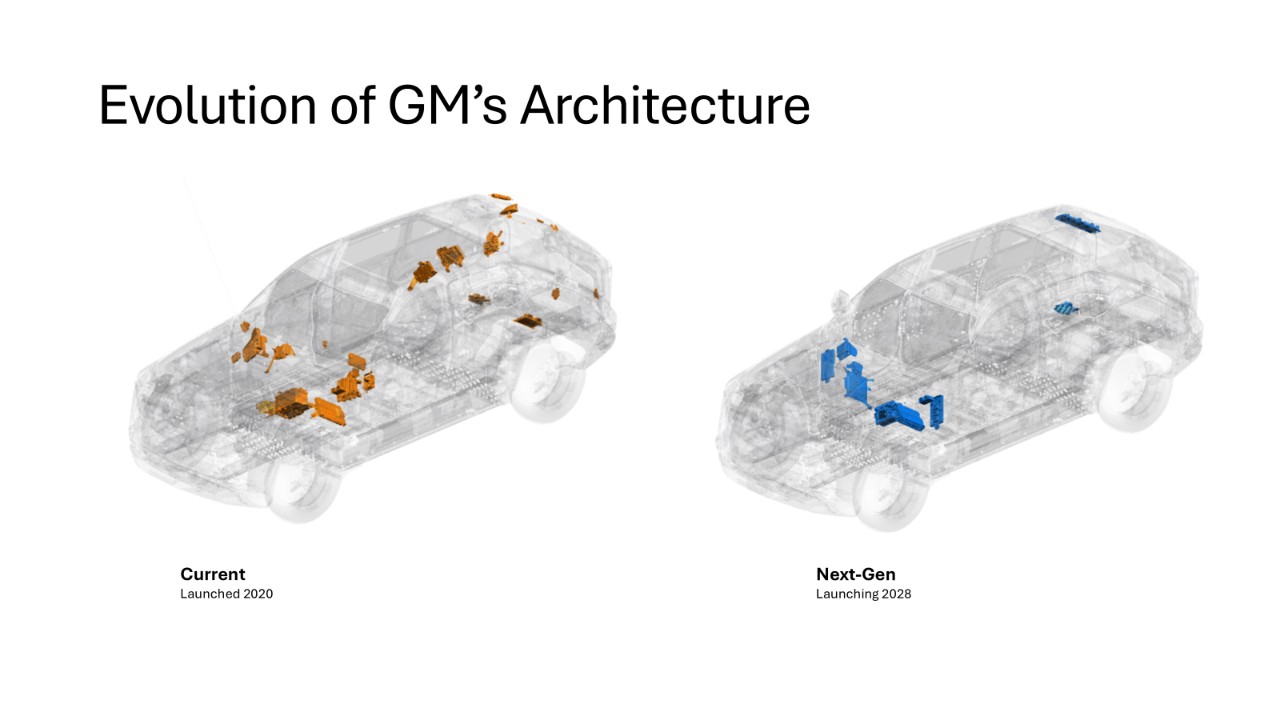GM unveils centralized vehicle computing platform for electric and gas vehicles
2025-10-22
General Motors will launch a centralized computing platform and next-generation electrical architecture across electric and gas-powered vehicles, starting with the Cadillac ESCALADE IQ in 2028. The new design represents a fundamental reimagining of how GM vehicles are built, and how they can be updated over time.
Already, more than 4.5 million GM vehicles can receive over-the-air vehicle system updates, a number growing by about 2 million per year. Last year alone, 1.6 million vehicles received coordinated software updates.
Now, we're taking this capability even further.
A new approach
GM is moving toward a centralized computing design that unlocks new levels of performance, scalability, and software efficiency.
The revised architecture dramatically reduces the number of vehicle modules, simplifying design, improving reliability, and enabling faster software updates, while preserving GM’s manufacturing scale and flexibility.
With this approach, GM will share software across its portfolio, both electric and gas-powered vehicles, large and small. GM vehicles will be always connected, awake, and available, with near-instant responsiveness to remote commands.
Caption: This diagram depicts the revised architecture of GM's vehicle computing platform.
The updated architecture builds on GM’s Vehicle Intelligence Platform, which launched in 2020 to allow secure over-the-air updates. In 2022, GM unified dozens of infotainment modules into a single computing platform and consolidated multiple advanced driver assistance systems into one. The new platform consolidates dozens of electronic control units into a unified computing core that coordinates every subsystem in the vehicle in real time.
Faster, smarter updates
Much like a smartphone’s single, powerful microprocessor that orchestrates everything from your camera to your messages, this centralized approach connects every system — propulsion, steering, braking, infotainment, and safety — through a high-speed Ethernet backbone.
This has the potential to drive dramatic change for customers:
Growing to deliver 10 times more software updates for new features than our previous system.
Real-time safety updates in a self-driving system that reacts in milliseconds and evolves with each autonomous update – even faster than our current system.
1,000 times more bandwidth for faster connectivity, richer entertainment, and future AI workloads.
Under the hood
At the heart of the system is a liquid-cooled central compute unit powered by next-generation processors such as NVIDIA Thor. That core connects to three aggregators, serving as hubs for the vehicle’s different zones.
Instead of wiring hundreds of sensors and actuators directly to the central processor, these aggregators act as translators, converting sensor signals into a unified digital language, and routing commands back to the correct hardware.
This design delivers two major advantages:
Hardware freedom: Vehicle-specific components stay isolated from the software layer, so GM can swap suppliers or upgrade parts like brake actuators, cameras, displays, and other components without rewriting core code.
The aggregators themselves are simple, functioning like smart junction boxes rather than miniature computers. They marshal data and commands but execute zero control logic. All intelligence, including sensor fusion algorithms, control arbitration, and machine learning inference, runs on the Thor-powered computing platform, centralizing processing and simplifying software updates by consolidating them to a single location in the vehicle.
Built for scale
With up to 35 times more AI computing power (TOPS, or trillions of operations per second) for autonomy and a 2–4x boost in infotainment performance, GM’s platform is engineered with massive headroom as we build next-generation features. Its high-speed, low-latency Ethernet backbone supports real-time responsiveness, continuous connectivity, and future technology integration at scale.
The architecture also preserves hardware freedom — vehicle-specific components remain isolated from the software layer, allowing GM to upgrade key system components without rewriting core code.
Propulsion agnostic
GM’s new platform is propulsion agnostic, engineered to support both electric and internal-combustion vehicles. A single software and computing foundation means innovations developed for one vehicle type can be rapidly scaled across the entire portfolio, accelerating feature deployment while upholding GM’s standards for safety, cybersecurity, and reliability.
The road ahead
By combining centralized compute, software consolidation, and GM’s global scale, this architecture marks the beginning of a new chapter for the company’s vehicles:
Cars that learn and improve throughout their lifetime.
Architectures that deliver real-time intelligence and faster autonomy.
Platforms that bring the efficiency of the digital world into the physical one.
GM’s new computing platform will connect every GM vehicle to a smarter, faster, and continuously improving future.
Questions or comments: news@gm.com
Cadillac ESCALADE IQL with eyes-off technology. Simulated image. Production vehicle may vary.
General Motors will launch a centralized computing platform and next-generation electrical architecture across electric and gas-powered vehicles, starting with the Cadillac ESCALADE IQ in 2028. The new design represents a fundamental reimagining of how GM vehicles are built, and how they can be updated over time.
Already, more than 4.5 million GM vehicles can receive over-the-air vehicle system updates, a number growing by about 2 million per year. Last year alone, 1.6 million vehicles received coordinated software updates.
Now, we're taking this capability even further.
A new approach
GM is moving toward a centralized computing design that unlocks new levels of performance, scalability, and software efficiency.
The revised architecture dramatically reduces the number of vehicle modules, simplifying design, improving reliability, and enabling faster software updates, while preserving GM’s manufacturing scale and flexibility.
With this approach, GM will share software across its portfolio, both electric and gas-powered vehicles, large and small. GM vehicles will be always connected, awake, and available, with near-instant responsiveness to remote commands.
This diagram depicts the revised architecture of GM's vehicle computing platform.
The updated architecture builds on GM’s Vehicle Intelligence Platform, which launched in 2020 to allow secure over-the-air updates. In 2022, GM unified dozens of infotainment modules into a single computing platform and consolidated multiple advanced driver assistance systems into one. The new platform consolidates dozens of electronic control units into a unified computing core that coordinates every subsystem in the vehicle in real time.
Faster, smarter updates
Much like a smartphone’s single, powerful microprocessor that orchestrates everything from your camera to your messages, this centralized approach connects every system — propulsion, steering, braking, infotainment, and safety — through a high-speed Ethernet backbone.
This has the potential to drive dramatic change for customers:
- Growing to deliver 10 times more software updates for new features than our previous system.
- Real-time safety updates in a self-driving system that reacts in milliseconds and evolves with each autonomous update – even faster than our current system.
- 1,000 times more bandwidth for faster connectivity, richer entertainment, and future AI workloads.
Under the hood
At the heart of the system is a liquid-cooled central compute unit powered by next-generation processors such as NVIDIA Thor. That core connects to three aggregators, serving as hubs for the vehicle’s different zones.
Instead of wiring hundreds of sensors and actuators directly to the central processor, these aggregators act as translators, converting sensor signals into a unified digital language, and routing commands back to the correct hardware.
This design delivers two major advantages:
- Hardware freedom: Vehicle-specific components stay isolated from the software layer, so GM can swap suppliers or upgrade parts like brake actuators, cameras, displays, and other components without rewriting core code.
- Radical simplification: The new architecture simplifies the network topology. Instead of hundreds of point-to-point connections creating complex wiring and software integration challenges, you get clean “star-network” topologies with aggregators fanning out to their local zones.
The aggregators themselves are simple, functioning like smart junction boxes rather than miniature computers. They marshal data and commands but execute zero control logic. All intelligence, including sensor fusion algorithms, control arbitration, and machine learning inference, runs on the Thor-powered computing platform, centralizing processing and simplifying software updates by consolidating them to a single location in the vehicle.
Built for scale
With up to 35 times more AI computing power (TOPS, or trillions of operations per second) for autonomy and a 2–4x boost in infotainment performance, GM’s platform is engineered with massive headroom as we build next-generation features. Its high-speed, low-latency Ethernet backbone supports real-time responsiveness, continuous connectivity, and future technology integration at scale.
The architecture also preserves hardware freedom — vehicle-specific components remain isolated from the software layer, allowing GM to upgrade key system components without rewriting core code.
Propulsion agnostic
GM’s new platform is propulsion agnostic, engineered to support both electric and internal-combustion vehicles. A single software and computing foundation means innovations developed for one vehicle type can be rapidly scaled across the entire portfolio, accelerating feature deployment while upholding GM’s standards for safety, cybersecurity, and reliability.
The road ahead
By combining centralized compute, software consolidation, and GM’s global scale, this architecture marks the beginning of a new chapter for the company’s vehicles:
- Cars that learn and improve throughout their lifetime.
- Architectures that deliver real-time intelligence and faster autonomy.
- Platforms that bring the efficiency of the digital world into the physical one.
GM’s new computing platform will connect every GM vehicle to a smarter, faster, and continuously improving future.
Questions or comments: news@gm.com

